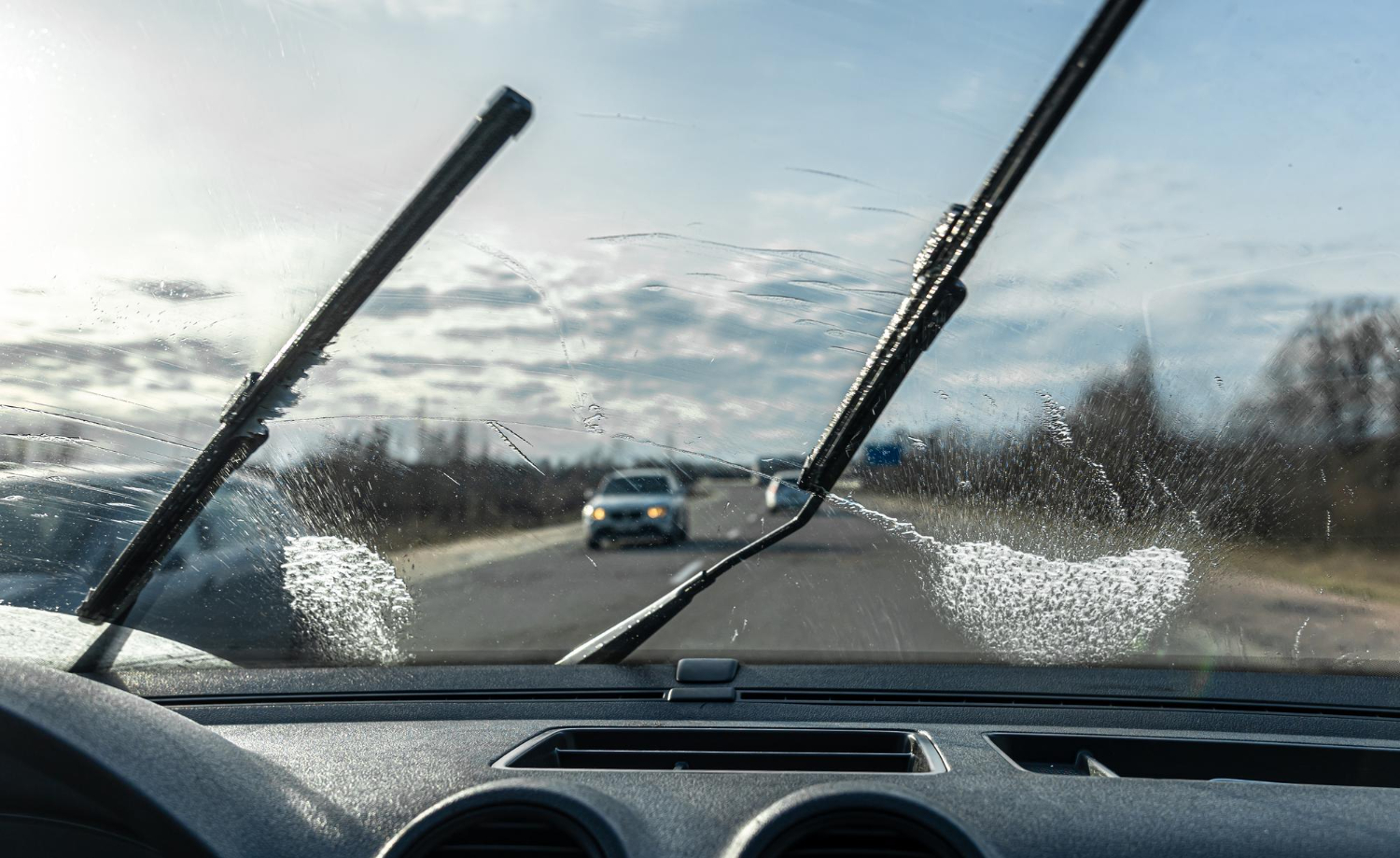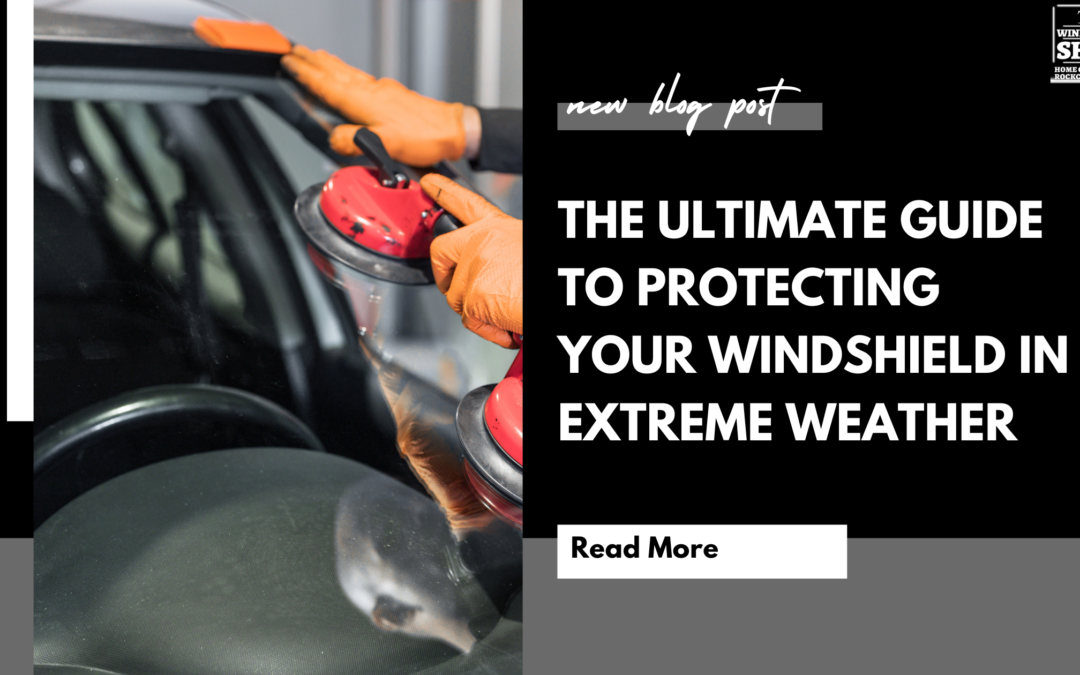- Extreme weather causes hidden stress that can crack or weaken your windshield if you don’t take simple, targeted preventive steps for each season.
- Proper maintenance and smart driving choices can extend the life of your windshield while reducing safety risks and saving you the cost of early replacement.
- The Windshield Shop provides professional assessments and high-quality repairs to ensure your windshield is always ready for any weather conditions you face.
A windshield does more than provide a clear view of the road—it serves as a vital safety component of your vehicle. In extreme weather, this importance grows. From blistering heat to freezing ice storms, every climate can stress glass in different ways. Cracks, chips, and sudden shattering can all result from weather exposure if you don’t take protective measures.
In this guide, you’ll discover practical, professional strategies to preserve your windshield during heat waves, cold snaps, hailstorms, heavy rains, and dust storms. This isn’t simply about avoiding repairs; it’s about safeguarding your comfort, budget, and safety mile after mile.
Understanding the Threats of Extreme Weather
Extreme weather can stress your windshield in ways that aren’t always obvious. Heat causes expansion in the glass, potentially worsening small chips or forming new cracks. Cold causes contraction, which can transform minor flaws into full-length splits overnight. Hail can pummel the surface with shocking force, while heavy rains can weaken existing damage.
Even UV exposure degrades the resin in repairs over time, leaving previously “fixed” chips vulnerable. In dust storms, flying debris can pit and scratch the glass, reducing visibility and weakening structural integrity.
Recognizing these threats is the first step toward preventing costly damage.
Summer Heat: How to Shield Your Windshield
High temperatures can make windshields more vulnerable to stress fractures, especially if there’s existing damage. When the interior of your car heats up, the air expands, pressing outward on the glass. Parking in the sun with closed windows can raise interior temperatures past 120°F.
To manage this:
- Use reflective sunshades inside your windshield. They reduce interior heat buildup significantly.
- Park in the shade when possible, or choose covered structures. Even partial shade reduces direct heat exposure.
- Crack your windows slightly when safe to release heat.
Temperature swings matter, too. Blasting your A/C on high the moment you start the car can create a rapid temperature differential between inside and outside surfaces. This sharp contrast stresses the glass. Gradually cooling your car helps avoid this.
Another summer threat: UV damage to repairs. Resin used in chip repair can degrade under intense sunlight. While high-quality resins resist UV better, they benefit from shade and sunshades to prolong their effectiveness.
Cold Weather and Ice: Preventing Damage in Freezing Conditions
In winter, small chips or cracks often grow larger. Glass contracts in the cold, pulling flaws open. Then, as the cabin warms up, the sudden expansion can worsen them.
Avoid pouring hot water over a frozen windshield. That shock from near-freezing to steaming temperatures can cause the glass to crack instantly. Instead, use an ice scraper with care and avoid banging it against the glass.
A windshield cover can keep ice and frost off overnight, reducing the need to scrape entirely. When defrosting, start the car and let it warm slowly. Use the defroster at low heat first, then gradually raise the temperature.
De-icer sprays can help, but choose options designed for automotive glass to avoid residue or damage.
Hailstorms: Preparing Before the Impact
Hail is among the most destructive forces for automotive glass. Golf-ball-sized hail can shatter even tempered or laminated glass with ease.
If hail is forecast, park in a garage or covered lot. If you’re caught without cover, consider moving to a location with overhead protection.
Emergency solutions like thick blankets can reduce impact force when properly secured over the windshield. There are also purpose-built hail covers available for drivers in hail-prone regions.
After a hailstorm, inspect your windshield closely. Even tiny chips from hail impacts can grow over time. Prompt professional assessment can save you the cost of a full replacement later.
Heavy Rain and Flooding: Invisible Risks
While rain itself doesn’t crack glass, it reveals and worsens existing vulnerabilities. Water can seep into chips or cracks, especially if they reach the inner laminate layer. This intrusion can weaken the structural bond and compromise safety.
Flooding poses additional hazards. If your vehicle sits in floodwaters, water pressure can stress the glass from inside if doors are hard to open or slam shut under pressure.
Proactive maintenance is key. Even tiny chips should be professionally repaired before the rainy season. Professional sealants can keep water out, preserving the integrity of your glass.
Dust Storms and Wind-Blown Debris
In certain regions, sand and dust storms can strike with little warning. Fine particulates scour the glass, leaving behind hazy, scratched surfaces that scatter light and reduce visibility.
Whenever possible, avoid driving during a dust storm. If you’re forced to park, choose sheltered spots away from the prevailing wind. A car cover can offer a first layer of defense against abrasive debris.
Regularly clean your windshield with automotive-safe glass cleaner and microfiber cloths. Avoid dry-wiping, which can grind dust into the glass and make scratches worse.
Windshield Wipers: A Critical but Overlooked Factor
Your wipers see extreme conditions all year. Cracked, dry, or misaligned wiper blades can trap debris and scrape the windshield. In heavy storms or heat, these scratches can worsen rapidly.
Inspect your wipers every few months. Replace them at least twice a year in climates with extreme weather. Modern beam-style blades conform better to the glass, reducing the chance of streaks and scratches.
Don’t forget washer fluid. Specialized formulations for winter resist freezing, while summer versions often fight bugs and sap. A clean windshield stays stronger, as grime buildup can hide damage that might expand with weather changes.
Professional Repairs: Why Timing Matters
A chip the size of a dime may seem harmless, but when temperatures swing or storms hit, that damage can spread across the entire windshield in hours.
Professional repair technicians use specialized resin to fill and seal chips. This process restores much of the original strength. Waiting too long allows dirt, moisture, and debris to enter the chip, weakening the repair.
Prompt repairs are particularly important before extreme seasons. A pre-summer or pre-winter inspection can catch small damage before it becomes irreparable.
Quality Matters: Choosing the Right Glass and Service
Not all glass is equal. OEM (Original Equipment Manufacturer) glass is engineered to match the structural and optical standards of your vehicle. Lower-quality replacements might look fine initially but may lack durability under weather stress.
Choose a reputable installer with certified technicians. They ensure the glass bonds correctly to your car’s frame, preserving safety features like airbag deployment paths and rollover protection.
Proper adhesives also matter. Cold-weather-rated adhesives cure properly even in low temperatures, while summer-rated products resist softening in heat.

Insurance Considerations: Planning Ahead
Comprehensive auto insurance often covers windshield repairs or replacement due to weather damage. But policies vary. Some offer full glass coverage with no deductible, while others treat it like any other collision claim.
Review your policy carefully before storm season. Knowing your coverage means fewer surprises if hail or debris leaves you needing a new windshield.
Some insurers even partner with glass specialists for faster claims and mobile repair services. This convenience can make a stressful situation easier to manage.
Driving Strategies for Weather Safety
Avoiding damage isn’t only about parking and maintenance. Your driving style matters too.
In storms with heavy rain, slow down. The impact of road debris is more forceful at higher speeds. During hailstorms, if you’re caught in motion, look for the nearest safe shelter, such as covered gas stations or parking garages.
On icy roads, gentle braking and steering help prevent accidents. A collision, even a minor one, can crack or shatter your windshield.
Awareness of changing conditions gives you the chance to act before damage occurs.
Seasonal Checklists: Keeping Ahead of the Weather
While daily vigilance is important, a seasonal approach helps catch issues early.
Before Summer:
- Inspect for chips and cracks.
- Apply UV-protective windshield treatments if desired.
- Replace sunshades if they’re worn.
Before Winter:
- Inspect wipers and replace if needed.
- Check washer fluid for freeze resistance.
- Use windshield covers to prevent frost buildup.
These small efforts can extend the life of your glass while saving you the cost and hassle of emergency replacements.
Advanced Glass Treatments: Worth It?
Many drivers consider aftermarket protective films or hydrophobic coatings.
Hydrophobic coatings improve visibility in rain by repelling water. While they don’t make glass stronger, they reduce wiper use and help prevent scratches from trapped debris.
Protective films add a layer of impact resistance. They can absorb small debris hits and reduce the chance of shattering in hail. However, installation quality matters. Poorly applied film can peel, bubble, or trap debris.
Professional application is recommended. Reputable shops will explain benefits and maintenance needs so you can decide if the investment suits your climate and driving style.
The Value of Local Expertise
Weather varies dramatically across regions. A desert climate needs different windshield care than a northern, snowy one.
Local professionals understand these demands. They know which adhesives cure well in your climate, what hail protection actually works in your area, and how to anticipate local seasonal hazards.
A shop that listens and tailors solutions gives you confidence that your vehicle is ready for anything.
Why Prevention is Always Cheaper
Replacing a windshield can be expensive—hundreds of dollars at minimum, more for advanced ADAS-equipped glass. Insurance deductibles can still sting, and improper installations risk further damage.
Small investments in sunshades, wiper maintenance, and early repairs cost far less. Even hail blankets or windshield covers are modest expenses compared to glass replacement.
Prevention also saves time. No one wants to scramble for appointments after a surprise hailstorm or icy night that turned a small chip into a huge crack.
Partnering with Trusted Professionals
Ultimately, protecting your windshield is part of taking care of your entire vehicle. A clear, intact windshield is essential for safe driving, comfortable travel, and even your car’s resale value.
Working with a shop that prioritizes quality, educates customers, and stands behind its work ensures you don’t face these weather challenges alone.
Extreme weather is unpredictable. Preparation doesn’t eliminate risk, but it puts you in control. By understanding your local conditions, maintaining your windshield, and acting early, you protect more than glass; you protect every journey ahead.
Trust The Windshield Shop for expert repairs and quality replacements that stand up to any weather. Drive with confidence knowing your vehicle is ready for whatever nature brings. Schedule your professional assessment with us and safeguard your view.


